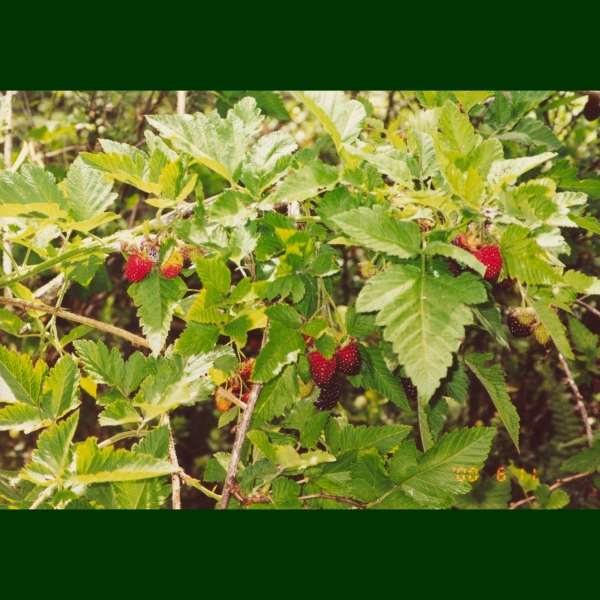 Hawaiian Name(s): ‘ākala, ‘ākalakala, kala
Hawaiian Name(s): ‘ākala, ‘ākalakala, kalaScientific Name: Rubus (2 species)
Vernacular Name: Hawaiian raspberry
Family: Rosaceae
Status: endemic
Authority: R. hawaiiensis A.Gray, R. macraei A.Gray
Description: Shrubs with shredding bark.
Habitat R. hawaiiensis found in mesic to wet forest and subalpine woodland from 600–3070 m on Kaua‘i, Moloka‘i, Maui, and Hawai‘i; R. macraei less common and occuring on rocky areas in wet forests, bog margins, and inside thickets of other plants in pastures or subalpine shrubland on Hawai‘i and East Maui between 1610–2080 m (Wagner et al. 1990:1108–1109).
Medicines: The ash of dried ‘ākala stem and naupaka (Scaevola spp.) is used for kepia (dandruff). Ashes of ‘ākala stem and ripe he‘i (papaya, Carica papaya) are ingetsed as a treatment for umauma naha (burning effect in the chest ) and hoaoa lua‘i (stomach ailment with vomiting) (Chun 1994:20–21).
Non Medicinal Uses: Used primarily for its edible fruit (Handy et al 1972:235); rose colored dye obtained from the ripe fruit (Abbott 1992:56). This plant was also invoked by kahuna as a symbol of freeing during rituals (Chun 1994:20).
Specific gravity of wood: unknown
Famous Locations:
Mele:
`Ōlelo Noeau:
Dye Color and Parts: Pink (fruit)
Kino lau:
Location on Bishop Museum Kalihi Campus:
Propagation Information: Native Plants Hawaii.
Seed: Seed length approximately 3 mm. Photograph: H.Lennstrom. Species: R. macraei .

